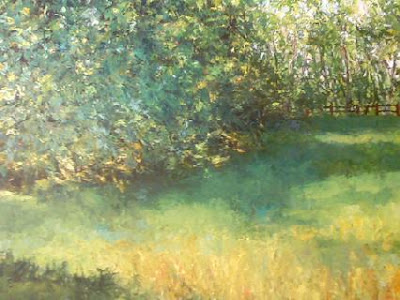

An interesting project that I assigned to my adult drawing class and also to my advanced teen art class - I set up a simple still life (3 objects) and had them lightly sketch it as accurately and simply as possible. Then they were instructed to change their position and draw the same still life from another perspective on top of the first drawing. Then, move again, and draw a third sketch on top of the previous two. This was challenging to keep the drawings "separate" and not become confused.
Next part - extend some lines from the drawing to edges of the paper to break up the background and break through positive and negative spaces. Another challenge to sort of keep the still life yet abstract the subject as well as the rectangular space of the paper. After extending the lines to get a pleasing composition, I gave the adult class options to add color outside of class, but had the teens darken lines with a sharpie marker. They had to be careful when adding the black to keep everything balanced. This meant not going over some lines as well as thickening other lines. The first photo shows the overall composition of one student's work. The second photo shows his color scheme.
I used this assignment to move into some color theory for these students. I wanted them to work with only five tones, limiting their palette. I gave them 3 choices:
a. choose a secondary color (a mixture of two primaries) and add white and black to this color to make 5 values.
b. choose 5 analogous colors on the color wheel (the color wheel set up with primary, secondary, and tertiary colors). Example - red, red-purple, purple, purple-blue, blue.
c. choose any two complementary colors for two of the five hues, and mixtures of both for the other three. The student's work shown here has a color choice of blue and orange, with mixtures of predominantly orange with some blue, predominantly blue with some orange, and then a mixture of orange and blue that makes a lovely brown.
Limitations - they used acrylic paint, and work in hour sessions only. This means they can't mix five nice batches of paint to work from for an extended session, so they are constantly mixing their hues and not always repeating the exact same color each time. But, actually, that works in a serendipitous way - all colors are in the same "family" no matter, and the paintings are holding together tonally.
This is definitely a lesson I will keep and use again!

















